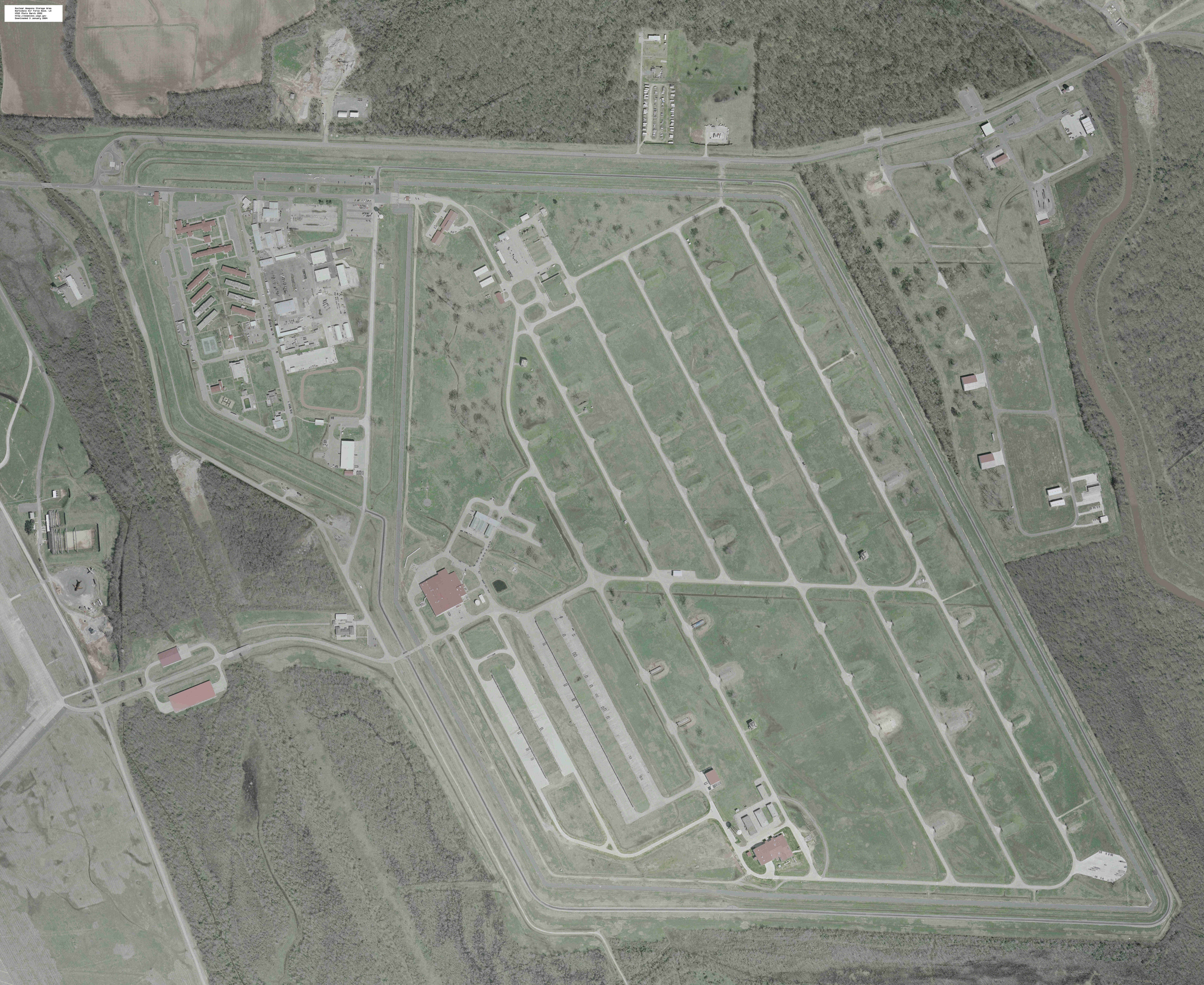 |
1 May 2004. One of the Eyeball
series.
Source of photo:
http://seamless.usgs.gov
Evaluating U.S. Air Force Nuclear Weapons Storage Area Security in the Post Cold-War Environment:
http://www.au.af.mil/au/awc/awcgate/acsc/00-038.pdf
Nuclear Security: Can DOE Meet Facility Security Requirements?:
http://www.pogo.org/p/environment/et-040401-nuclear.html
US Nuclear Forces, 2004:
http://www.thebulletin.org/issues/nukenotes/mj04nukenote.html
Barksdale Air Force Base:
http://www.barksdale.af.mil
http://www.nrdc.org/nuclear/tkstock/p53-94.pdf
LOUISIANARank: No. 9
Nuclear Warheads: 540
Barksdale
AIR FORCE BASELOUISIANA ranks 9th in number of nuclear weapons deployed, a fairly steady rank (7th in 1992 and 9th in 1985). However, Barksdale AFB, south of Bossier City, has undergone a major change with the closure of one of the Air Force’s three main nuclear weapons general depots at the base (the others, at Kirtland AFB in New Mexico and Nellis AFB in Nevada, remain open). The 3097th Aviation Depot Squadron, also one of three major nuclear support units in the Air Force, was deactivated.
Barksdale was one of six original national stockpile sites (NSS) storing nuclear weapons for the U.S. military (called Bossier Base). The former nuclear weapons storage area (WSA) was initially constructed by the AEC between 1949 and 1951. Bossier Base was jointly operated by the AEC, the Armed Forces Special Weapons Project, and Air Force Materiel Command. The first weapons arrived in 1951. The original complex included three storage buildings with vaults (“A” structures), a maintenance building (“C” structure), two other assembly/maintenance buildings, two types of storage igloos, and a dry low-level radioactive waste disposal area.
Barksdale is today the main B-52H bomber base of the Air Force, housing 58 of the service’s 95 planes. The base hosts the largest Air Combat Command bomber wing, the 2d Bomb Wing. Nuclear weapons stored at Barksdale for use by these bombers include 50 B61-7 and 90 B83 gravity bombs, 300 Air-launched cruise missile (ALCMs), and 100 Advanced Cruise Missiles (ACMs).
The U.S. stock of 1740 nuclear-armed air-launched cruise missiles–ALCMs and ACMs–far exceeds the number of bombers and most (an estimated 1,040) are in storage in Nevada and New Mexico. The operational ALCM and ACM stock, we estimate, is split between two B-52 bomber bases, one northern and one southern. Since the stealthy ACM has a greater ability to penetrate concerted air defenses, we estimate that more ACMs are stored in the northern base (for earlier arriving bombers) and more ALCMs are stored at the southern base. Additional B61 and B83 nuclear gravity bombs, not the normal post-Cold War load for non-penetrating bombers, are also assessed to be deployed at Barksdale to fulfill the requirements of certain war plans.
The 2nd Bomb Wing received the USAF Nuclear Surety Plaque for 1993 for “distinguished performance.” Air Combat Command conducted Nuclear Staff Assistance Visits (NSAVs) in June 1994 and October 1995. The Wing and its subordinate 2nd Support Squadron again received a USAF Nuclear Surety Plaque in 1995 for “outstanding achievements” and “contributions” to nuclear security during their October nuclear mini-inspection. The 2nd Munitions Squadron also received the Safety Award of Distinction for maintaining “the highest safety standards” with its stock of over 700 air-launched cruise missiles and B83 bombs. From 16-28 March 1996, the 2nd Wing again underwent a Nuclear Operational Readiness Inspection (NORI). ACC again provided a Nuclear Staff Assistance Visit in January 1997.
Note that several of the weapons bunkers were undergoing repairs at the time of the photo for what appears to be moisture damage.
A previous eyeball of Barksdale nuclear weapons storage area:
http://cryptome.org/bark-eyeball.htm
|
|